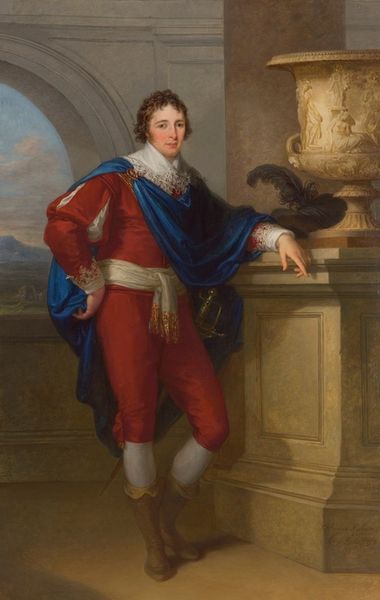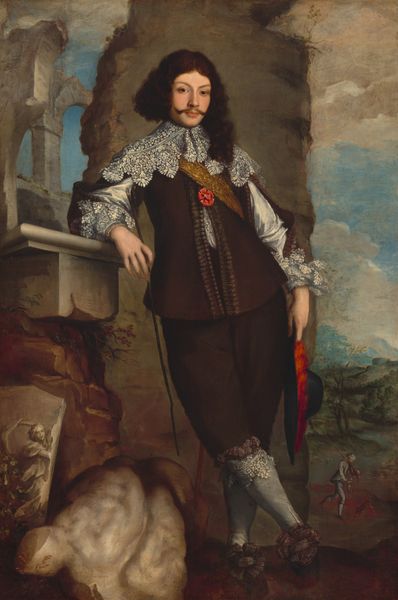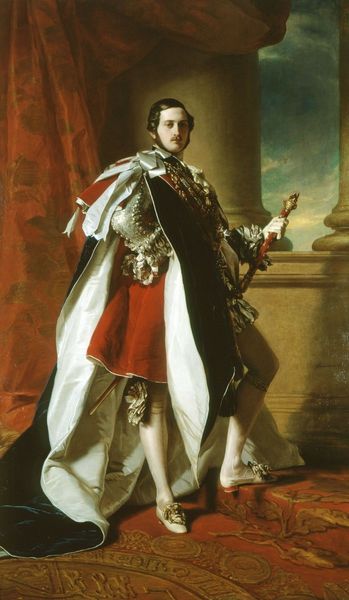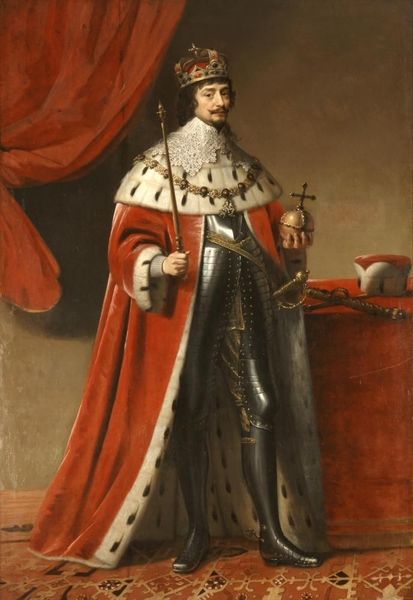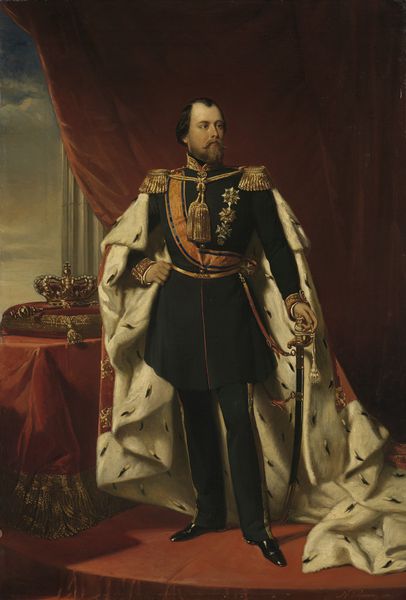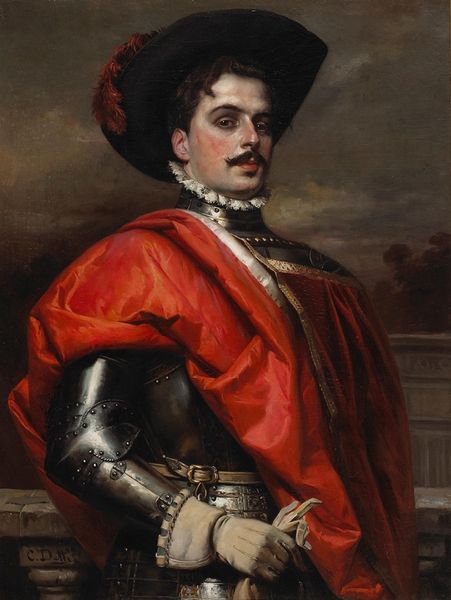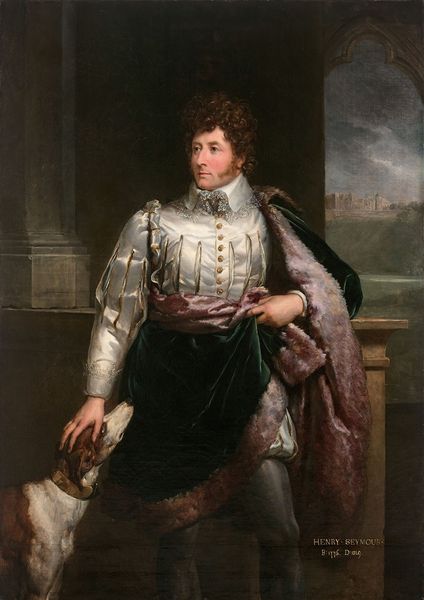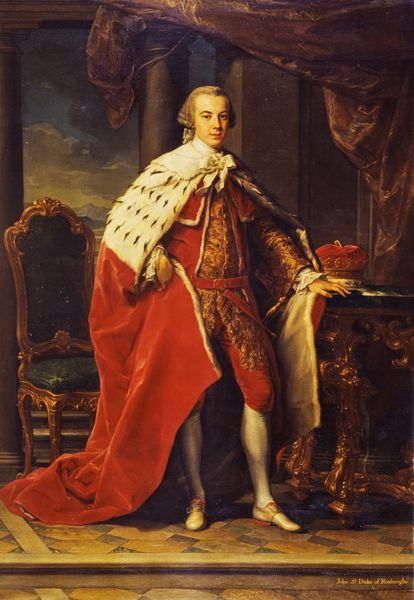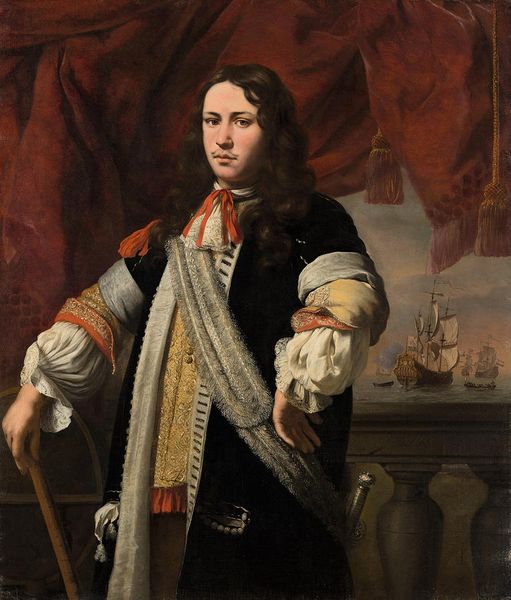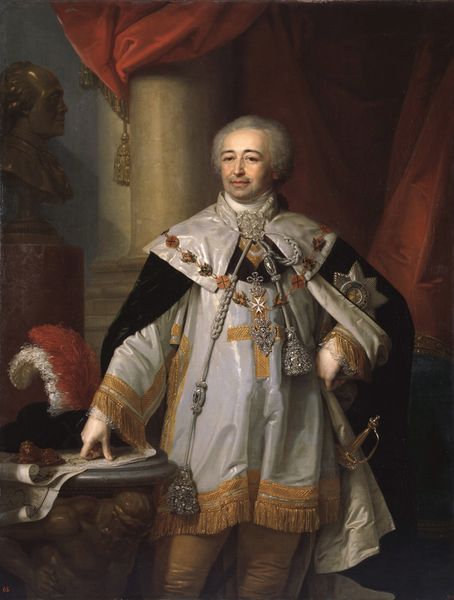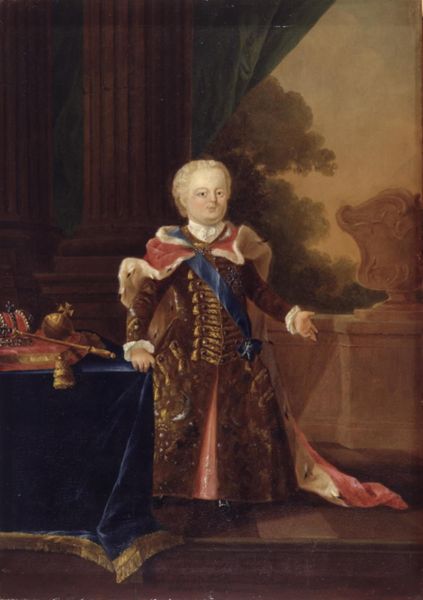
Portrait of Count Rzewuski, Polish Ambassador to Denmark 1789 - 1790
0:00
0:00
painting, oil-paint, canvas
#
portrait
#
neoclacissism
#
painting
#
oil-paint
#
canvas
#
history-painting
#
academic-art
Dimensions: 81 cm (height) x 57.5 cm (width) (Netto)
Curator: Standing before us is C.A. Lorentzen's "Portrait of Count Rzewuski, Polish Ambassador to Denmark," created circa 1789-1790. Editor: He certainly cuts an imposing figure, doesn’t he? Regal, almost theatrical. There's a powerful sense of self-assurance radiating from this piece. The sharp angles in his gaze contrast nicely with the soft light of the open landscape behind. Curator: Indeed. Lorentzen, deeply influenced by the neoclassical movement, meticulously renders Rzewuski in this oil-on-canvas painting. We see clear visual cues of the academic art style emerging at the time. Editor: Thinking about the timing – painted during a period of immense political and social upheaval, what do you make of the artist's choices in presenting him this way? Curator: It’s impossible to separate this portrait from its socio-political environment. Here's a Polish ambassador, representing a kingdom already fractured, in the twilight of its autonomy. Editor: The backdrop with the Greek columns feels purposeful, invoking a romanticized, almost mythological ideal of leadership during an age defined by reason and revolutionary activity. Perhaps this image of Rzewuski attempts to solidify an identity for the Polish state. Curator: Precisely. Note the prominent sash, the ermine, and the detailed order displayed so prominently. It speaks of a desperate need to reaffirm noble identity and tradition during this moment. How do we reconcile this seemingly self-assured portrayal with Poland's impending partitions and powerlessness in Europe? Editor: Absolutely. And those trappings—the velvet cloak, the golden embroidery— are, in a sense, props within the ambassador's attempt to embody power when real authority may be waning or threatened. This painting performs a powerful type of self-affirmation, an act of visual defiance against an incoming shift in global politics. Curator: A fascinating perspective, particularly within the grand narrative of Polish history. This really challenges how we view the role of the art within larger cultural power dynamics. Editor: A potent reminder that portraiture always participates in constructing and maintaining identities—be they personal, national, or historical— and often reflect, in ways subtle or direct, a conscious political act. Curator: Well, thank you for sharing such interesting ideas on power, image, and representation in art! Editor: It was my pleasure. It's pieces like this that remind me how art, seemingly passive, can be such a powerful lens to see history in all its complexities.
Comments
No comments
Be the first to comment and join the conversation on the ultimate creative platform.

